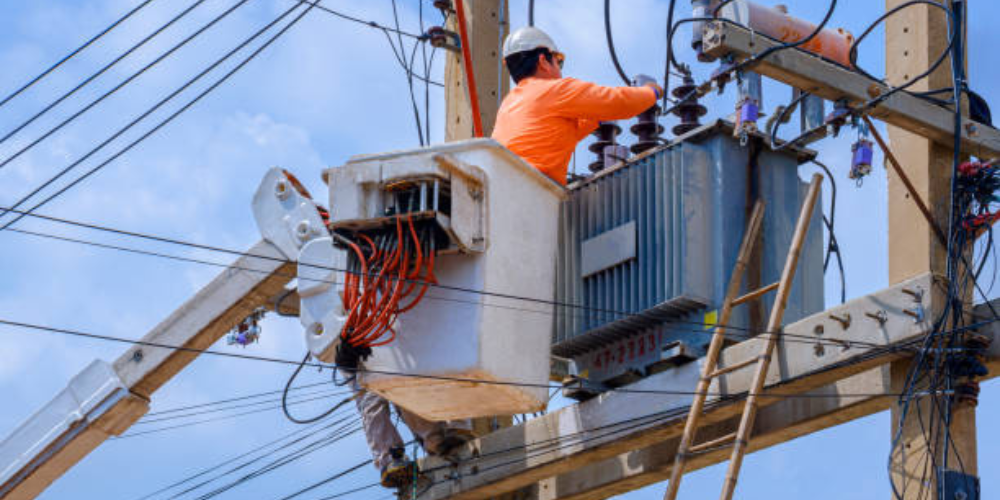In this blog, there are complete details of types of transformers according to their components and functionality.
1. Types of transformer based on Core
- Core Type transformer
In the core-type transformer, there are two horizontal bars and two cylinders to make the frame. A common magnetic circuit with a square-shaped magnetic core. HV and LV are two cylindrical coils available in two cylinders. In this type, the winding is on the magnetic core, which gives a path for the flow of magnetic flux.
Advantages
- Windings are exposed to oil and air for proper heat dissipation.
- It has good magnetic coupling to reduce leakage losses.
- The core type has an accessible winding that you can repair easily.
Formula
Vp/Vs = Np/Ns
Losses
There are copper loss, stary loss, and core loss (hysteresis and eddy current losses).
- Shell-type transformer
A Shall-type transformer is made up of core surrounding windings. It has a proper design with improved efficiency, reduced flux leakage, perfect magnetic flux control, and occupies less space as compared to the core type. This type of transformer consists of a magnetic core and windings.
Advantages
- It can understand the short circuit better because of the perfect winding system.
- It controls the flux transport due to its core utilization.
Formula
Same as the core type.
Losses
It minimizes the stary loss with lover flux leakage as compared to the core type transformer.
- Berry type transformer
These transformers are in the shape of a berry and provide better flux distribution, high voltage, and efficiency in reducing the loss ratio. People are using Berry-type transformers in power distribution systems, large industrial plants, and high-voltage applications. It consists of the magnetic core, cooling system, windings, and tank.
Formula
Same as the transformer general equation.
Losses
It reduces flux leakage due to the circular core and improves efficiency.
2. Type of transformer based on voltage conversion
- Step-up transformer
By reducing the current, a step-up transformer raises the voltage in the primary coil and transfers it to the secondary coil. It is made up of insulation, a cooling system, a winding, and a core. The step-up transformer’s formula is as follows:
Vs = Vp x Ns/Np
If Ns > Np and Vs > Vp, then it creates a step-up transformer.
In this case, the primary voltage is denoted by Vp and the secondary by Vs. Np and Ns are the primary and secondary numbers of turns, respectively. Electrical appliances, renewable energy systems, power transmission, and industrial applications all make use of this transformer.
Advantages
- It decreases the current to recover the loss rate in the system.
- These are reliable transformers that can operate for a longer time.
- You can use it in industries due to the high voltage transformation.
Losses
It has high voltage and causes increased core losses.
- Step-down transformer
The output voltage is reduced and the current is increased from the primary coil to the secondary by a step-down transformer. The eddy current is eliminated due to the fact that it is made of laminated silicon steel. When Ns is less than Np and Vs is less than Vp, then a step-down transformer is created. The step-down transformer is used in household equipment, industrial applications, power distribution, and electrical equipment because it minimizes losses.
Advantages
- It makes high-voltage, safe electricity that is usable in home and industrial appliances.
- It reduces the power losses and runs for a longer time.
Formula
Vs = Vp x Ns/Np
If Np > Ns and Vp > Vs, then it creates a step-down transformer.
Losses
Increased current causes higher copper losses.
3. Transformer Types based on winding
- Two-winding transformer
A winding transformer is an electric machine that transfers electric energy from one point to another without a single change in the frequency. It has a separate and specific number of turns with two windings known as primary and secondary windings.
Formula
Vp/Vs = Np/Ns
Losses
It has separate windings, which is why it causes high copper losses.
- Auto-transformer
This transformer has the same number of transformers in the output and input. Both primary and secondary windings are not insulated with electric current.
Formula
Vs = (1 – a) Vp
Losses
Due to shared windings, it has reduced copper losses.
4. Types of transformers based on their function
- Power transformer
It is a type of transformer that can control high-voltage power levels efficiently. Due to its ability to function at voltages ranging from 33 kV to 200 MVA, it is extensively utilized in high-voltage power transmission, substitutions, power plants, and distribution networks. A power transformer’s magnetic core, windings, tap changer, and cooling system are its primary parts.
Advantages
- It steps up the voltage for the transmission of longer distances, which is why it is used in substitutions and power plants.
- It is also used in home appliances because it can also step down the voltage according to the consumption.
- People are using power transformers in solar framing and wind turbines because they generate power in the grid.
Formula
n= output power/input power x 100
Losses
In this transformer, core loss depends upon the number of continuous operations. It reduces the copper losses.
- Distribution transformer
Because it lowers the voltage level for the household appliance, this kind of transformer is also referred to as a consumption transformer. It reduces the voltage for commercial and industrial use by stepping down high-voltage electricity. Because of its compact size, it provides easy installation and maintenance. The distribution transformers work continually without any power loss.
Formula
Same as a power transformer.
Losses
Load is changing frequently; that is why copper losses are higher.
- Isolation transformer
Insulation transformers have two windings that are independent of each other because they are not insulated with electricity. But there is the flow of magnetic flux; that is why primary and secondary windings are connected magnetically. In the secondary coil, there is a point where the voltage is almost zero, and two pints have different voltages that reduce the short circuits and leakage of electricity. Due to different turns of wiring, there are different voltage-ampere characteristics.
Formula
Vp = Vs and Np = Ns
Losses
It has very low dielectric losses.
- Potential transformer
These transformers transfer the voltage from the higher-value primary coil to the lower-value secondary coil. Because it makes lowering the voltage to increase security easy, it is used in low-voltage devices such as voltmeters, wattmeters, and watt-hour meters.
Formula
Vp/Vs = Np/Ns
Load potential transformer
S = Vs x Is
Losses
Reduced core losses and higher copper losses.
- Current transformer
This transformer is used for protection and to transfer electricity. When current is directly transferred to the application, then this transformer is used to reduce the value to current according to the application to enhance the security. The transformer is connected in series with applications such as wattmeters, ammeters, and others with the main supply so that it can transfer the electricity properly and protect the devices.
Formula
NpIp = NsIs
Losses
It has increased secondary current, so there are reduced core losses.
5. Types of transformers based on phase number
- Single phase transformer
A single-phase transformer operates a single-phase AC power and gives a single AC power output. It is used in step-up or step-down voltage according to commercial, home, and industrial equipment. It is cheap in price as compared to three-phase, which is why it is mostly used in urban areas. You can easily divide it into air and natural cooling transformers. It has a smaller size and is very easy to construct and maintain for a longer time.
Formula
Vp/Vs = Np/Ns
Losses
Face copper loss, core loss, and dielectric losses.
- Three-phase transformer
A three-phase transformer is made up of three primary and secondary windings with a leg of iron core. It reduces iron losses due to the high-quality laminated core.
Formula
P = (3)^½ VlLlcosx
Losses
Copper, cover, and dielectric transformer.


